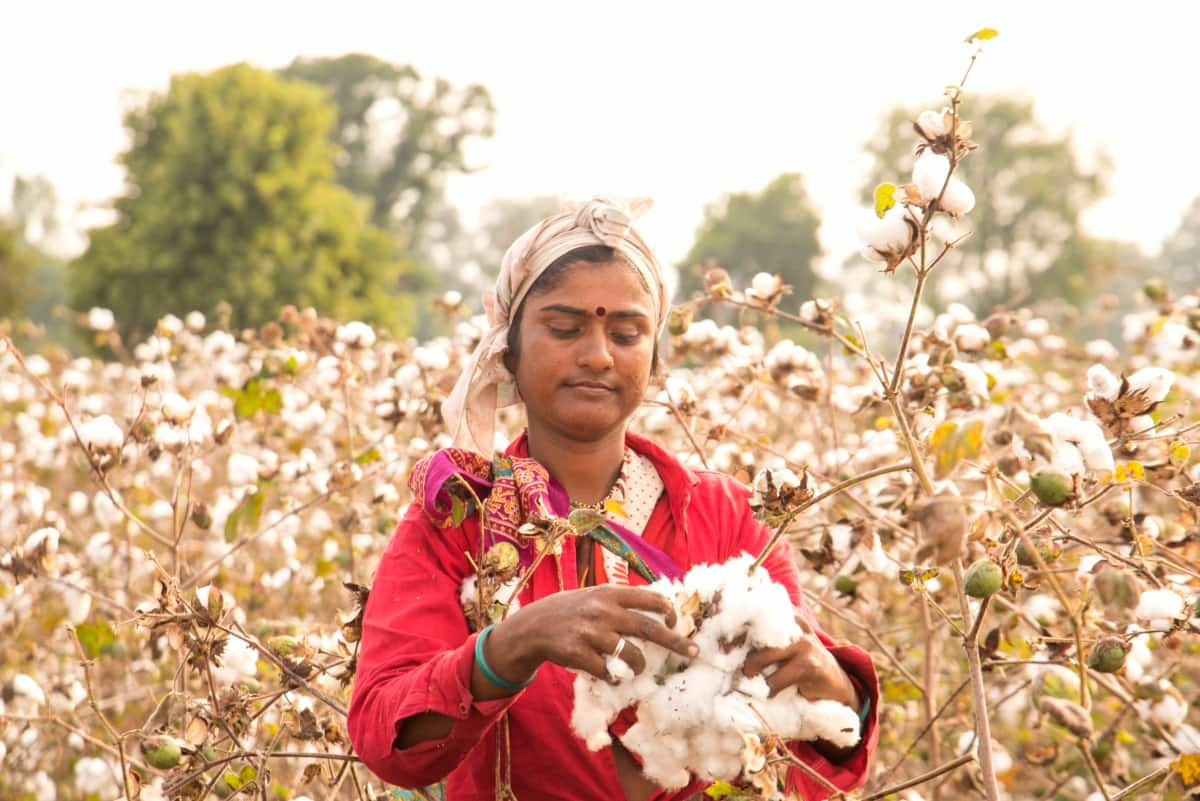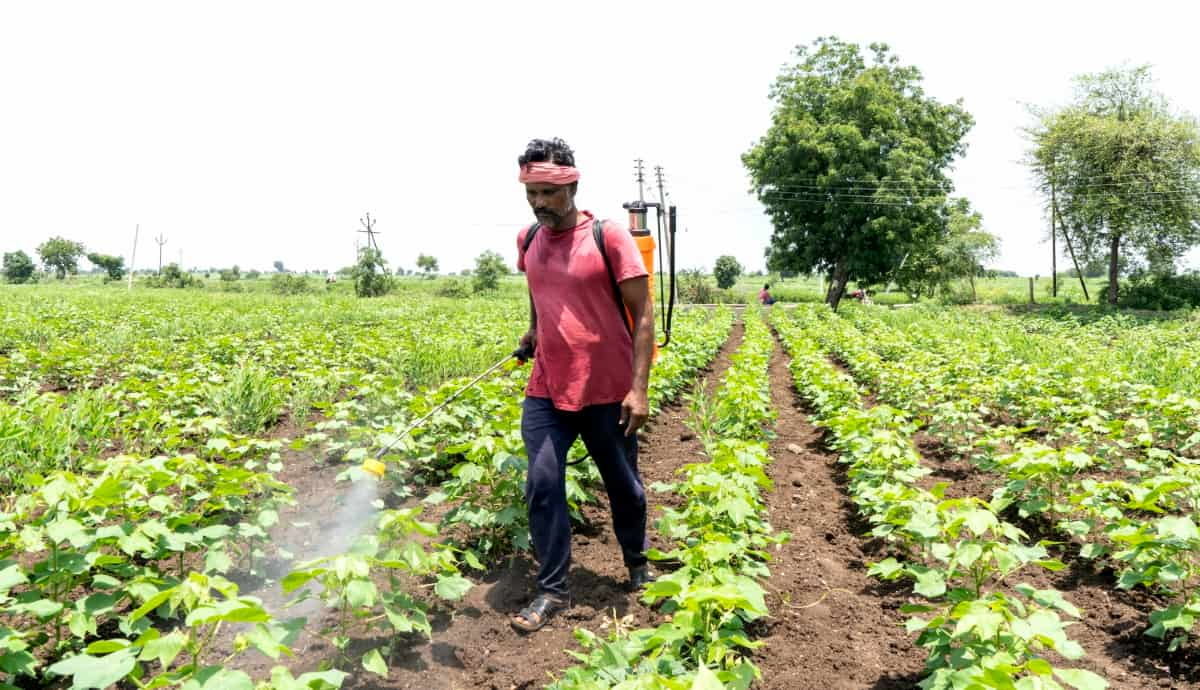Welcome to our latest blog post, where we delve into the world of cotton farming and explore the best and latest pesticide options available to control insect pests. It is important to combat these pests effectively to ensure better profits for cotton growers. With advancements in agricultural science, new and improved pesticides have emerged, offering enhanced protection against destructive insects.

This article will discuss these innovative solutions and provide accurate data on their efficacy. Get ready to discover a wealth of information that will empower you to make informed decisions for your cotton plants, leading to increased yields and greater financial success. Let’s dive in!
Latest Pesticide for Cotton Plants
What are Pesticides?
Pesticides are chemical substances that control or eliminate pests that can damage crops, harm livestock, or spread diseases. These include insects, rodents, fungi, weeds, and other unwanted organisms. Pesticides play a crucial role in modern agriculture, with approximately 5.6 billion pounds of active ingredients used globally yearly. Their effectiveness in protecting crops and ensuring food security has made them an essential tool for farmers worldwide.
Benefits of Pesticides for Cotton Plants
Enhanced Crop Yield: Pesticides help protect cotton plants from harmful insect pests, reducing crop losses and increasing overall yield. Studies have shown that proper pesticide application can increase yield by up to 30%.
Pest Control: Pesticides effectively target and control a different range of insect pests, such as bollworms, aphids, and whiteflies, which can cause significant damage to cotton plants. Controlling these pests ensures healthier plants and higher-quality cotton fiber.
Disease Prevention: Pesticides combat insects and help prevent the spread of diseases caused by pathogens. Diseases like Fusarium wilt and Verticillium wilt can be controlled using pesticides, safeguarding the cotton crop from devastating losses.
Cost Efficiency: Implementing pesticide applications at the right time and in the correct dosage can save farmers substantial costs by preventing damage from pests. A well-managed pest control strategy reduces the need for additional inputs and allows for efficient resource allocation.
Sustainable Agriculture: Pesticides contribute to sustainable cotton farming by reducing the need for excessive manual labor, minimizing post-harvest losses, and ensuring a reliable supply of cotton fiber. This fosters economic stability and food security in cotton-producing regions while promoting environmentally responsible practices.
When to Apply Pesticides for Cotton Plants
- Monitoring: Regularly monitor your cotton plants for signs of pest infestation, such as insect damage, eggs, or population buildup. Early detection is key.
- Action Threshold: Determine the action threshold and the pest population level at which intervention is necessary. This helps prevent unnecessary pesticide applications.
- Timing: Apply pesticides during the appropriate growth stages of cotton plants. For example, insecticides targeting bollworms are typically applied when the plants enter the flowering stage.
- Life Cycle: Consider the life cycle of the target pests. Apply pesticides when the pests are most vulnerable, such as during egg-laying or hatching.
- Weather Conditions: Consider weather conditions, as they can affect pest activity and pesticide efficacy. Avoid applying pesticides during windy or rainy periods.
How to Apply Pesticides to Cotton Plants
- Timing: Apply pesticides at the right stage of plant growth to target pests effectively. For cotton, this is typical during the early stages of ball formation and the opening stage when pests are most active.
- Spraying Techniques: Use a calibrated sprayer to ensure accurate and even distribution of the pesticide solution. Adjust spray nozzles and pressure to create a fine mist covering both leaves’ upper and lower surfaces.
- Integrated Pest Management (IPM): Incorporate IPM strategies, such as monitoring pest populations and using thresholds to determine the need for pesticide application. This approach helps minimize unnecessary pesticide use.
- Safety Measures: Follow all safety guidelines and wear appropriate protective gear when handling and applying pesticides. Adhere to recommended dosage rates to avoid negative environmental and human health impacts.
- Recordkeeping: Maintain detailed records of pesticide applications, including dates, pesticide types, and dosage rates. This information is valuable for future reference and helps track pest control effectiveness.
In case you missed it: How to Grow Organic Cotton: Best Cultivation Practices

How Often to Apply Pesticides for Cotton Plants
The frequency of pesticide application for cotton plants depends on various factors, including pest pressure and the specific pesticide used. Generally, multiple applications are required throughout the growing season, typically at intervals of 12-18 days. However, it’s crucial to follow the pesticide label instructions.
Latest Pesticides for Cotton Crop with Brand
Insecticides for Bollworm Control
Indoxacarb 14.5% SC (Amsac – Atul crop care)
- Dosage: 200 ml/acre
- Remarks: Effective against bollworms.
Thiodicarb 75 WP (Larvin – Bayer)
- Dosage: 2 gm/liter water
- Remarks: Recommended for bollworm control.
Chlorpyrifos 50% + Cypermethrin 5% EC (Balio 505 – Atul crop care)
- Dosage: 400 ml/acre
- Remarks: Offers control against bollworms.
Thiamethoxam 12.6% + Lambda cyhalothrin 9.5% ZC (Helico – Atul crop care)
- Dosage: 80 ml/acre
- Remarks: Effective against bollworms.
Emamectin benzoate 5% SG (Lepto – Atul crop care)
- Dosage: 90 gm/acre
- Remarks: Recommended for bollworm control.
Insecticides for Aphids, Jassids, Thrips, and Whiteflies
Chlorpyrifos 50% + Cypermethrin 5% EC (Balio 505 – Atul crop care)
- Dosage: 400 ml/acre
- Remarks: Effective against aphids, jassids, thrips, and whiteflies.
Flonicamid 50 WG (Ulala – UPL)
- Dosage: 60-80 gm/acre
- Remarks: Recommended for controlling aphids.
Afidopyropen 50 g/L DC (Sefina – BASF)
- Dosage: 2 ml/liter water
- Remarks: Effective against aphids belonging to the Pyropene chemical class.
Pyriproxyfen 5% + Diafenthiuron 25% SE (Crolis – Atul crop care)
- Dosage: 500 ml/acre
- Remarks: Provides control against aphids, jassids, thrips, and whiteflies.
Fungicides for Grey Mildew and Leaf Spot Control
Azoxystrobin 18.2% + Difenoconazole 11.4% SC (Prabhavi – Atul crop care)
- Dosage: 200 ml/acre
- Remarks: Effective against grey mildew and leaf spot.
Fluxapyroxad 167 g/L + Pyraclostrobin 333 g/L SC (Priaxor – BASF)
Dosage: 1.5-2 ml/liter water
Note: These pesticide options provide effective control against various pests and diseases affecting cotton crops. However, it is important to follow the recommended dosages and safety guidelines provided by the manufacturers for optimal results and to minimize potential risks.
Pesticides for Cotton Crop: Target Pests, Dosage, Mode of Application
- Bt Cotton: Genetically modified cotton that produces Bacillus thuringiensis (Bt) toxins, targeting bollworms and other lepidopteran pests. Dosage and application follow the guidelines provided by the seed manufacturer.
- Imidacloprid: A systemic insecticide that controls sucking pests like aphids and whiteflies. Applied as a foliar spray at a dosage of 25-50 grams per hectare.
- Acephate: A broad-spectrum insecticide effective against aphids, whiteflies, and other pests. Applied as a foliar spray at a dosage of 250-500 grams per hectare.
- Chlorpyrifos: A contact and stomach insecticide that controls various pests, including bollworms and aphids. Applied as a foliar spray at 500-1000 milliliters per hectare.
- Glyphosate: A non-selective herbicide used for weed control. Applied as a pre-planting or post-emergence spray, following recommended dosage rates based on weed density.
- Pendimethalin: A selective herbicide effective against the grass and broadleaf weeds. Applied as a pre-emergence spray at a dosage of 1-2 liters per hectare.
- Trifluralin: A pre-emergence herbicide targeting annual grasses and broadleaf weeds. Applied before planting at a dosage of 1-2 liters per hectare.
- Propiconazole: A systemic fungicide used to control various fungal diseases, including Alternaria leaf spot and powdery mildew. Applied as a foliar spray at a dosage of 200-250 grams per hectare.
- Tebuconazole: A systemic fungicide effective against fungal diseases like Fusarium wilt and seedling blight. Applied as a foliar spray at a dosage of 200-250 grams per hectare.
- Copper Oxychloride: A contact fungicide used for disease control, including bacterial blight and black arm. Applied as a foliar spray at a dosage of 300-500 grams per hectare.
In case you missed it: Cotton Production Guide: A Step-By-Step Cultivation Practices

Conclusion
The selection of the best and latest pesticides for cotton plants plays a crucial role in effectively controlling insect pests, ensuring healthier crops, and ultimately leading to better profits for cotton growers.
- Feed Your Flock for Less: Top 10 Tips to Save on Chicken Feed
- Ultimate Guide to Ossabaw Island Hog: Breeding, Raising, Diet, and Care
- Hatching Answers: The Top 10 Reasons Your Chickens Aren’t Laying Eggs
- Eggs and Economics: Breaking Down the Cost of Raising Backyard Chickens
- Defend Your Greens: Proven Methods to Keep Iguanas Out of Your Garden
- Ultimate Guide to Cinnamon Queen Chicken: A Comprehensive Guide for Beginners
- Ultimate Guide to California Tan Chicken: Breeding, Raising, Diet, Egg-Production and Care
- Ultimate Guide to Marsh Daisy Chicken: Breeding, Raising, Diet, and Care
- 10 Types of Chicken Farming Businesses You Can Start for Profits